Ensure your products withstand the heat with labels engineered for high-temperature environments. Our high heat labels are crafted to endure intense conditions without compromising on performance or readability. Ideal for industries ranging from automotive to aerospace, these labels maintain adhesion and clarity even in the most demanding applications.

High heat labels are essential for products that must withstand extreme temperatures. Whether in manufacturing, processing, or end-use environments, these labels are designed to maintain their integrity and readability under intense heat. From automotive components to electronic parts, these labels are engineered to meet rigorous thermal demands.
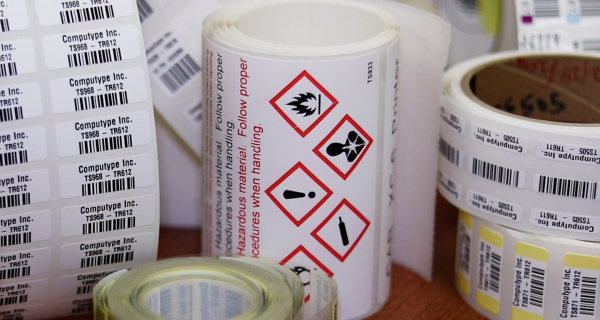
Effective high heat labels are built with materials and adhesives that resist thermal degradation and maintain adhesion even under extreme conditions. These labels are designed to survive processes such as curing, soldering, and autoclaving without losing functionality.
Curing subjects materials like rubber or adhesives to heat between 250°F and 400°F, causing a chemical reaction that hardens them. In automotive manufacturing, proper curing is crucial for component durability. High-heat labels must endure these temperatures without losing adhesion, contrast, or clarity.
Soldering and brazing join metal parts by heating them to 500°F to 1,600°F, melting a filler material into the joint. Common in electronics and metalworking, these processes require precise, durable bonds. High heat labels are designed to resist adhesive breakdown and ink smudging under these conditions.
Autoclaving sterilizes products using high-temperature steam under pressure, typically 250°F to 275°F. Common in medical, laboratory, and food industries, this method ensures equipment and materials are contaminant-free. Labels must endure multiple autoclaving cycles without losing adhesion or legibility.
Application temperature is the range within which a label can be applied to a surface and the adhesive will bond properly. In contrast, the operating temperature is the range of temperatures that the label can withstand once applied. For example, a label capable of withstanding extreme heat up to 400°F may still require an application temperature of 50°F or higher to ensure effective adhesion.
Applying labels outside their recommended application temperature can result in poor adhesion, which may lead to label failure under high heat. Ensuring labels are applied within the proper temperature range guarantees they will bond effectively and maintain their durability even in extreme heat, preserving their integrity and functionality throughout their use.
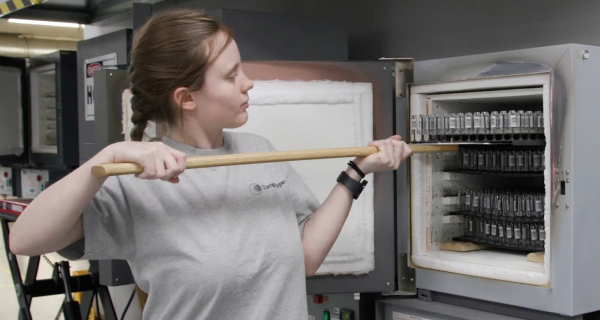
When choosing label materials and adhesives for high-heat applications, it’s crucial to consider factors that ensure long-lasting performance under extreme conditions. Labels exposed to high temperatures must maintain their integrity, readability, and adhesion to fulfill their purpose. Understanding the unique demands of high-heat environments helps in selecting the right materials that offer reliability and durability.
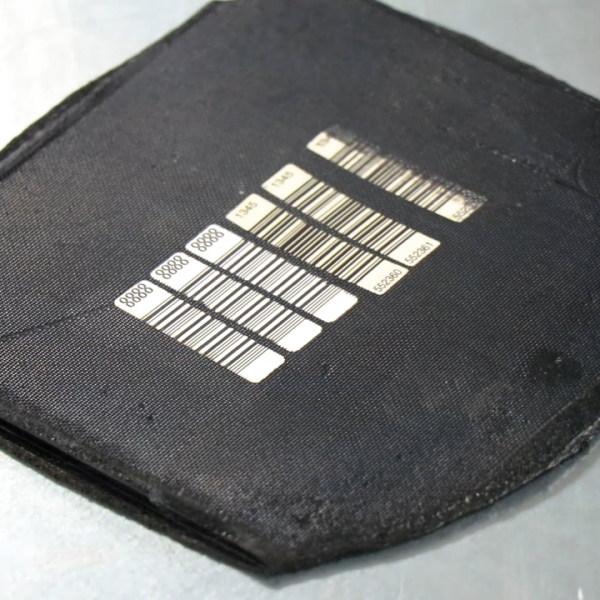
High-heat environments impose specific challenges that label materials must overcome to remain effective. The ability of a label to resist shrinking, discoloration, and adhesive failure is directly tied to the materials used in its construction. Labels designed for high-heat applications must incorporate materials that can withstand the intense thermal stress.
Poor material selection can lead to issues like warping, adhesive failure, and loss of readability. Labels in high-heat conditions require materials that won’t degrade, deform, or lose their functionality. This includes selecting face stocks and adhesives specifically engineered to endure extreme temperatures.
By carefully choosing materials that meet these criteria, labels can continue to perform reliably, even in the most demanding environments. The combination of heat-resistant face stocks, specialized adhesives, and protective coatings ensures that labels remain secure, legible, and functional. This prevents costly failures and ensures that labels continue to perform their critical roles.
High mechanical strength ensures that label materials can withstand physical stress without tearing, breaking, or deforming. This is essential in environments where labels face rough handling, abrasion, or impact. Labels with high mechanical strength stay intact and readable, even in harsh industrial conditions.
Low outgassing characteristics prevent the release of volatile organic compounds (VOCs) or gases when labels are exposed to high temperatures. This is crucial in sensitive environments like electronics or aerospace, where outgassing could cause contamination. Labels with low outgassing properties ensure a clean and reliable environment.
Good dimensional stability ensures that labels maintain their size and shape when exposed to high temperatures, avoiding issues like shrinkage or distortion. This is important for preserving barcode readability and adhesion. Labels with good dimensional stability perform reliably, preserving functionality and appearance.
Maintaining high contrast is essential for the readability of barcodes and other critical information, especially in high heat environments. One common issue is the discoloration of the label’s face stock, where the white background turns yellow under extreme temperatures. This discoloration reduces contrast, making barcodes difficult to scan and potentially leading to errors or inefficiencies.
To avoid this, it’s important to use face stocks that are specifically designed to resist discoloration at high temperatures. These materials are engineered to retain their white color, ensuring that the black printed information remains in sharp contrast. High-quality face stocks not only prevent yellowing but also help maintain the structural integrity of the label, avoiding warping or shrinking.

High-heat labels are essential in various industries where products and components are exposed to extreme temperatures. From automotive manufacturing to aerospace engineering, these labels play a crucial role in maintaining identification, safety, and compliance. Understanding the specific applications of high-heat labels helps in selecting the right solutions for each unique environment.
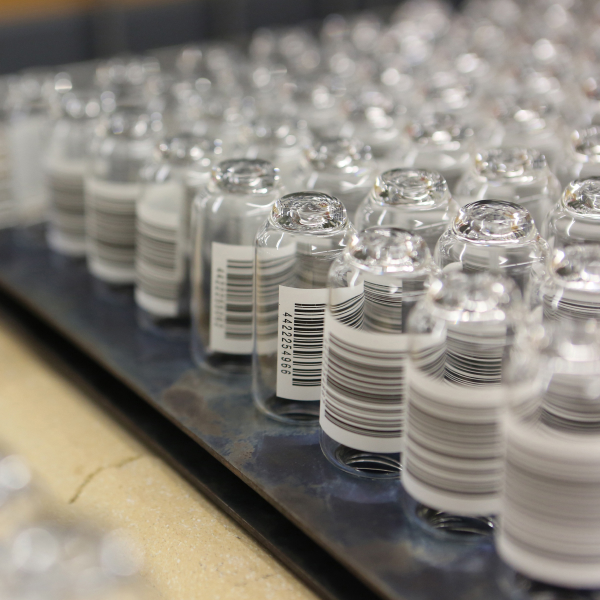
High-heat labels are essential in various industries, where components and products are regularly exposed to extreme temperatures. In automotive, aerospace, industrial manufacturing, and laboratory settings, these labels ensure the accurate tracking, identification, and safety of critical components. Whether in the engine of a car, the wiring of an aircraft, or the equipment in a manufacturing plant, high-heat labels must perform reliably under challenging conditions.
High-heat labels for metal must endure processes like welding and heat treatment while resisting chemical exposure. These labels maintain strong adhesion and clear readability for industrial applications
Labels for glass need to withstand the heat of tempering or sterilization without causing fractures. They must prevent yellowing, ensuring that important data remains clear and legible on smooth surfaces.

Printed circuit board (PCB) labels withstand the high temperatures of soldering and reflow processes, ensuring critical data remains intact. These labels endure up to 500°F, making them essential for reliable tracking in electronics manufacturing.

Automotive parts labels resist the intense heat generated by engines and exhaust systems, maintaining visibility of important information. These labels withstand oils and mechanical stress, ensuring durability throughout the vehicle’s life.

Tire barcode labels survive the high heat and pressure of the vulcanization process, bonding securely with rubber. They ensure that tires can be accurately tracked from production to end use without losing label integrity.
Connect with us to explore how our labeling solutions can support your agriculture samples. Unlock new efficiencies with our expertise.
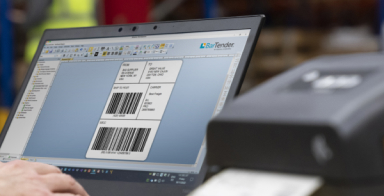
BarTender makes label design and printing simple and efficient. Integrate easily with agricultural systems for compliance and tracking.

Cryo labels remain durable in extreme cold conditions. Ideal for long-term storage of samples at ultra-low temperatures.
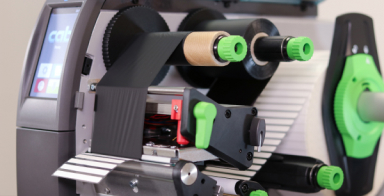
The cab Squix printer delivers precise, high-quality label printing for various applications. It combines versatility and reliability to meet demanding needs.












© Computype 2024
© Computype 2024
Take advantage of our volume discounts for bulk orders. Reach out to us for a personalized quote tailored to your needs.
"*" indicates required fields